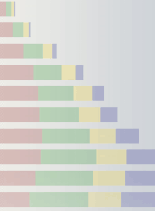PPHP 2: Advancing Global Education
Overview:
- Even while widely recognized as fundamentally important, the educational attainment of peoples proves inadequate almost everywhere, especially across the developing world. At the beginning of the twenty-first century, just 88 percent of the world’s children completed primary education, and in Middle Africa only 40 percent did so. In the same year, only 66 percent of children enrolled in secondary education globally, and the portion in Eastern Africa barely reached 20 percent. At the tertiary level, 21 percent of those of age enrolled world-wide, and the level was at or below 2 percent in countries as disparate as Afghanistan, Bhutan, Papua New Guinea, and Yemen. The gap between education for women and men remains stubbornly large – in South Asia, 55 percent of males enrolled in secondary education, but only 43 percent of females did so.
- World-wide in 2000, the average years of education attained by those 25-years of age and older reached only 6.6 years for men and 5.1 years for women. Although these numbers have increased by nearly 2 years since 1960, it is appalling that the average education of global adults remains essentially at the level of primary completion and that it is so unequally distributed.
- Within an environment with so many areas of need and of constrained resources, how can the governments of developing countries best advance human development through education? How much emphasis should societies place on education relative to basic health care, housing, or infrastructure? What relative emphases on primary, secondary, and tertiary education, over varying time frames, most increase people’s capabilities and the opportunities for these capabilities to be expressed? The answers to these and other questions about education within a human development framework are not necessarily intuitive.

